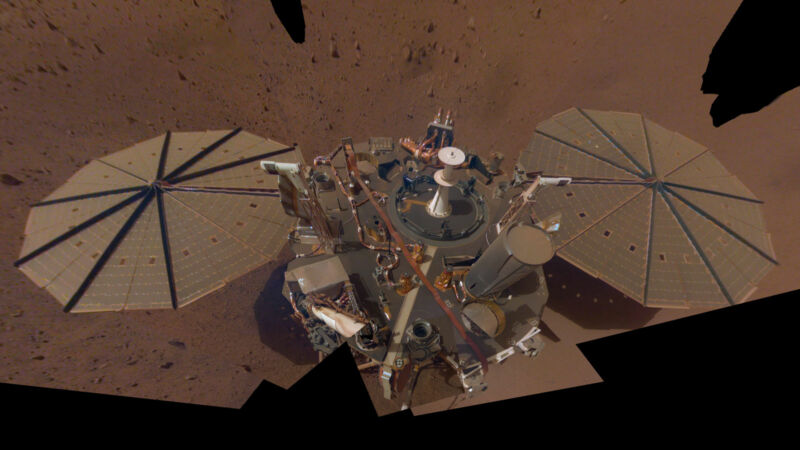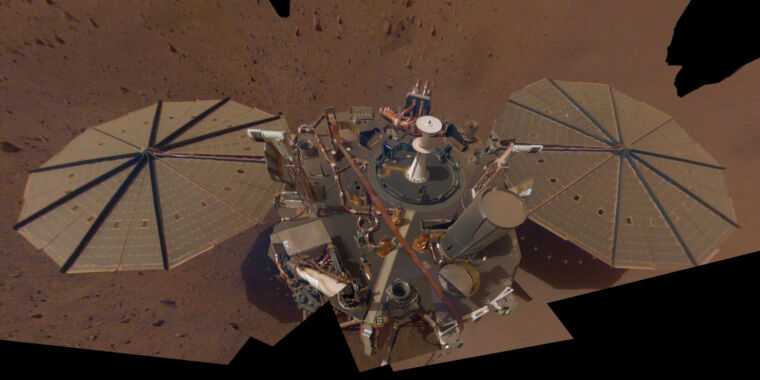
Today, NASA announced that it was giving up on its attempts to place a temperature sensor several meters under the Martian surface. Part of the agency’s InSight lander, the hardware was supposed to be placed deep enough to avoid the influence of Mars’ weather, seasons, and daily temperature changes. But because of the unusual conditions at the landing site, the hardware never made it below the surface.
The InSight lander carried several instruments meant to provide a clearer picture of Martian geology. One of those instruments, the SEIS seismometer, has been successfully tracking marsquakes to provide a better perspective on Mars’ structure and the local composition under the surface near the landing site. A second measures the wobbling of Mars’ axis of rotation, which will be influenced by a combination of the red planet’s composition and the gravitational influences of the rest of the Solar System.
InSight’s other major experiment is the Heat Flow and Physical Properties Package, or HP3. While previous landers hadn’t put any hardware deeper than about 20 centimeters, HP3 was designed to operate several meters below the Martian surface. From there, the fluctuations on the surface would be somewhat averaged out, and HP3 could measure the heat flow from the Martian interior to the surface. This would allow an estimate of the energy still left in the Martian core from a combination of its formation and radioactivity, a key element in understanding what geological activity might still be possible there.
A 3-meter drill, however, wouldn’t fit neatly on a lander. So HP3 was to be delivered to its operating depth by a device called “the mole.” The mole was designed to drive the hardware beneath the surface by leveraging the friction between it and the Martian soil; it would anchor itself, drive part of itself deeper using that anchor, and then inch forward and repeat the process.
But this plan, it turns out, had a problem: the soil didn’t allow enough friction for any of this to work. Now, after nearly a year of trying and a huge variety of troubleshooting techniques, the mission managers are accepting that the plan just isn’t going to work. This comes after the latest attempt, which involved using a robotic scoop on InSight to pile soil on top of the mole and attempt to press it down to provide more leverage.
Obviously, things didn’t work out because the properties of the soil at the InSight landing site were different from the expectations derived from elsewhere on Mars. So, in that sense, we learned something from the experience. And InSight’s remaining instruments continue to operate as planned. But we’re going to have to wait for another lander in order to take Mars’ temperature.



















